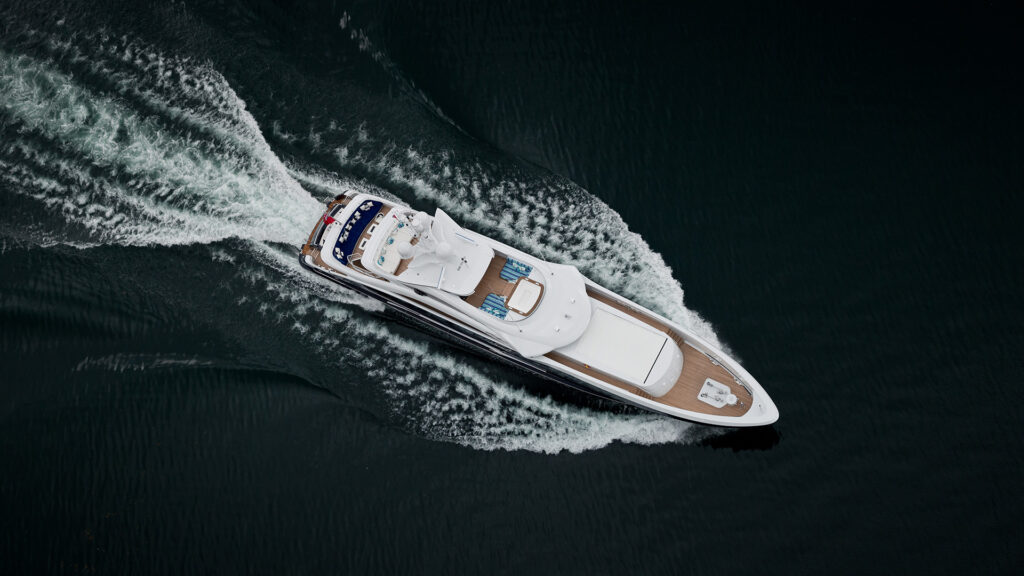Claimant’s Attempt to Drop Anchor in Shipowner’s Pocketbook Cut Short by The Bright-Line Rule of The Testbank, October 2017
Relying on the Robins Dry Dock/Testbank Formulation, the Fifth Circuit Court of Appeals affirms dismissal of a US$258 million claim against a shipowner arising out of an allision in Galveston Harbor
In Intrepid Ship Management Inc. et al. v. PRC Environmental Incorporated et al., HFW Houston partners Jim Brown and Mike Wray successfully defended shipowner Intrepid Ship Management from a US$258 million claim arising out of an allision between an articulated tug-barge unit and a semisubmersible drilling rig. After achieving summary dismissal in the U.S. District Court for the Southern District of Texas [Galveston Division], HFW Houston successfully defended the district court’s ruling when the rig owner appealed the dismissal to the Fifth Circuit Court of Appeals (Fifth Circuit) in New Orleans.
The Bright-Line Rule
Seeking to break the never-ending chain of causation for recovery of economic damages in maritime tort, the courts have fashioned a bright-line rule for standing to assert such claims. Admiralty courts have consistently required a plaintiff to show physical damage to property in which it has a proprietary interest in order to recover economic loss damages1 The economic loss rule was first developed by the U.S. Supreme Court in its Robins Dry Dock case in 1927. In its 1985 en banc Testbank decision, the Fifth Circuit declared its commitment to enforcing this limitation on standing to recover economic damages in maritime tort. Although strongly challenged each year since, the Fifth Circuit continues to reaffirm its commitment to this practical limitation on what it views as a potential never-ending chain of causation in maritime torts.
In Intrepid Ship Management Inc. et al. v. PRC Environmental Incorporated, the Fifth Circuit held that a putative joint venture agreement did not confer the plaintiff with sufficient proprietary interest in a rig to recover for a US$258 million claim for purely economic losses allegedly arising out of an allision. The Fifth Circuit’s decision once again demonstrated the Circuit’s continued dedication to the Robins Dry Dock rule.
The District Court Opinion2
On July 25, 2011, the Ocean Prospector (Rig) was purchased by Mr. Francisco Moreno at a judicial auction. On the same day, Mr. Moreno and PRC Environmental Inc. (PRC) entered into the “Viking Prospector Joint Venture Dismantling Agreement” (Joint Venture Agreement) for the purpose of selling the Rig, an aged semi-submersible drilling unit, for scrap and splitting the profits. The Rig had been cold-stacked in Galveston for approximately 13 years and as the Magistrate Judge noted, was a frequent visitor to the Court.
On August 4 2012, the Rig was moored at dock in Galveston, Texas when allision occurred between the Rig’s submerged and unmarked pontoon and the Resolve, an articulated tug/barge unit that was exiting an adjacent slip. Following the allision, PRC asserted a claim of approximately US$258 million against the Resolve’s owners/operators for alleged purely economic losses based on the allegation that the allision impaired the Rig’s market value and/or prevented the Rig from being converted to a “state of the art” floatel. The shipyard that was hired to do this work subsequently arrested the Rig for non-payment of wharfage whereupon it was consequently sold at a Marshal’s auction, dismantled and scrapped. The District Court noted as a result “upon the resolution of the current round of litigation it will, mercifully, no longer haunt the Court’s docket.”
The Resolve’s owners/operators filed a motion for summary judgment based on the Robins Dry Dock –Testbank formulation and argued that PRC did not gain a proprietary interest in the Rig via the Joint Venture Agreement. PRC argued that under the term of the Joint Venture Agreement, Moreno transferred the Rig to the joint venture at its formation.
The District Court therefore analyzed the express terms of the Joint Venture and held the following:
- Moreno held title to the Rig at the time of the allision.
- Under the Joint Venture Agreement, Moreno reserved the right to sell the Rig to third-parties if PRC breached the agreement.
- Title to the Rig did not transfer to the Joint Venture.
Based on the summary judgment record, the District Court held that PRC did not establish that it had any ownership interest in the Rig sufficient to establish standing to pursue a claim for purely economic losses under well-established Fifth Circuit precedent.3
The Fifth Circuit’s Opinion
Rig owner PRC appealed. The Fifth Circuit affirmed the District Court’s decision and found that PRC did not have sufficient proprietary interest in the Ocean Prospector to sustain a tort claim for purely economic damages. The key points in the Fifth Circuit’s decision are:
- To recover in this case, PRC must prove it had a proprietary interest in the Rig.4 To try to meet this burden, PRC claimed that the proprietary interest stems from two events: (1) the creation of a joint venture between Moreno and PRC, and (2) Moreno’s alleged transfer of the Rig to the joint venture.
- The Fifth Circuit concluded that PRC failed to bring forth facts that, if true, prove the existence of a joint venture. PRC failed to prove an agreement between Moreno and PRC to share profits and losses, meaning PRC could not gain a proprietary interest in the Rig through the joint venture.
- Even assuming that the joint venture was created, PRC has not brought forth sufficient facts to prove that Moreno either actually transferred or intended to transfer the Rig as required for individual property to become joint venture property.
In sum, the Fifth Circuit found that PRC failed to establish any basis under the Joint Venture Agreement to support a sufficient proprietary interest in the Rig to withstand a challenge under the Robins Dry Dock rule.
Conclusion
In maritime tort claims, the Fifth Circuit has consistently upheld and applied the Robins Dry Dock rule. As part of any initial claims evaluation, a plaintiff’s standing to pursue a claim for purely economic losses should be carefully scrutinized. Discovery should be tailored to explore the plaintiff’s right to pursue a claim for economic losses. As courts within the Fifth Circuit consistently apply the Robins Dry rule, summary judgment may be the appropriate vehicle to dispose of a economic loss claim no matter how large the number.
For more information, please contact the authors of this briefing:
James Brown
Partner and Master Mariner, Houston
T +1 (713) 706 1947
E jim.brown@hfw.com
Michael Wray
Partner, Houston
T +1 (713) 706-4905
E michael.wray@hfw.com
Footnotes
- The economic loss doctrine was first set forth in the United States Supreme Court decision in Robins Dry Dock v. Flint, 275 U.S. 203 (1927). The United States Court of Appeals for the Fifth Circuit reaffirmed the Robins Dry Dock standard in Louisiana ex rel. Guste v. M/V Testbank, 752 F.2d 1019, 1029 (5th Cir. 1985) (en banc).
- The underlying suit was filed in the United States District Court for the Southern District of Texas, Galveston Division; C.A. 12:-cv-00243.
- The District Court cited In re Bertucci Contracting Co., 712 F.3d 245, 246 (5th Cir. 1993) (allision case) and Testbank, supra.
- See In re Deepwater Horizon, 784 F.3d 1019, 1025–26 (5th Cir. 2015).
Download a PDF version of ‘Claimant’s Attempt to Drop Anchor in Shipowner’s Pocketbook Cut Short by The Bright-Line Rule of The Testbank, October 2017’







-1024x576.jpg)

